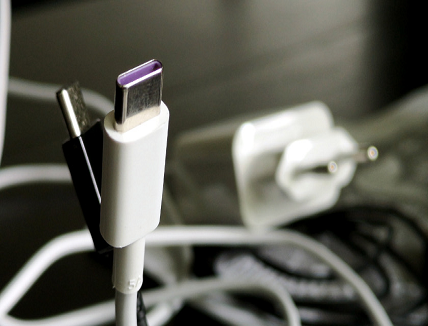
The Indian Government is in talks with industry veterans, stakeholders and the Ministry of Consumer Affairs for the adoption of a common or universal/one charger policy in India for portable electronic devices. These devices include smartphones, tablets, laptops and certain wearables. As reported so far India could initially explore shifting to two types of chargers, including a C-Type port. After listening to stakeholders’ issues, the Government is forming an expert panel to evaluate the potential and a the complete report is expected to be submitted in the coming two months as reported in the meeting
held on Aug 17th.
EU Perspective
On June 7 2022, the European Union announced the provisional political agreement to establish a single charging solution for certain electronic devices. By 2024, the EU aims to adopt USB Type-C as the common charging port. Apart from smartphones, laptops, digital cameras, and e-readers it also embraces portable videogame consoles, portable speakers, portable navigation devices and earbuds, keyboards, and computer mice.
The EU believes this change will help consumers to save up to €250 million a year on unnecessary charger purchases. It will also reduce e-waste which accumulates due to unused and disposed of chargers. It will move the EU towards more sustainability, and make consumers’ lives easier.
One Charger Policy in India: Perspective
Environment Protection
The environment is one of the reasons for such type of change. E-waste is a rising issue for the environment due to the presence of hazardous waste. E-waste is not biodegradable and toxic, it accumulates in soil, water, air and living things. Burning e-waste which is usually practised by the local workers or so-called informal sectors, who sell the scraps in the local market at a cheaper price, produces hazardous smoke. This ends up in the lead, mercury, beryllium, thallium, cadmium and arsenic, and many such life-threatening clouds of smoke which can lead to irreversible health effects, including cancers, miscarriages, neurological damage and diminished IQs.
According to the Global E-waste Monitor 2020 report, the global quantity of e-waste is increasing at an alarming rate of almost 2 Mt per year and 1 Megatonne, (Mt), is equivalent to 1 million (106) tonnes, or 1 billion (109) kilograms. India, for its part, produced 3.2 million metric tons of e-waste—much of which ended up in Seelampur. Although, India is the only country in Southern Asia with e-waste legislation and laws to manage e-waste have been in place since 2011, mandating that only authorised dismantlers and recyclers collect e-waste.
A one-charger policy in India could be a small but effective step towards addressing this challenge. Due to standardisation, consumers don’t have to buy a new charger every time, he buys a new device, which also decreases the number of chargers used in a home.
Illegal E-waste Import
Yes, the Illegal import of e-waste is a big issue for India. Worlds 80% of e-waste is dumped illegally in developing nations like India, China, Ghana and Nigeria. A paper published in the Journal of Health and Pollution 2017 estimated that around 50,000 metric tons of e-waste are being imported into India every year. On March 29th 2022, the Union government reported 29 cases of illegal import of e-waste across the country in 2019. Tamil Nadu and Maharashtra each stated 11 cases of illegal e- waste findings.
According to the ‘A New Circular Vision for Electronics’ report published by the World Economic Forum says the complex web of transhipment ports contributes to illegal e-waste movement. Nearly 1.3 million tonnes of discarded electronic products make their way out of the European Union without documentation.
If countries like the EU or maybe some other, will start using one charger, the rest of the chargers will be dumped in developing nations in name of refurbished goods. Adopting a one charger policy will help in clearing e-waste as no one needs those refurbished chargers anymore.
Challenges for One Charger Policy
India has a larger manufacturing base for chargers and it even imports them. The rule will hamper manufacturing with reduced domestic demand and impact the export too. The segment involved in low-budget or entry-level smartphones which use micro-USB cables will also be affected in terms of cost.
Another viewpoint is the inability to use patented technology as most companies have invested in optimizing the power demands of their chargers and products. The universal charger will also lead to no room for innovations as companies around the world aggressively work on fast charging solutions. The industry bodies demand research-based policymaking, including the observation of the EU’s single charging policy impact.
Why USB Type C?
USB Type-C, usually known as USB-C is a revolutionary connector which apart from charging the devices, transfers data, power and even videos. As long as devices themselves support USB C various functionality can be performed. USB C offers faster data transfer speeds up to 10 Gbps with the right cable/port combination. It is compatible with HDMI, VGA, and DisplayPort displays.
As it has a symmetrical design, it offers reversible plug orientation and cable direction so no need of getting confused about which end to plug in or which side. The connector is robust enough to support laptops, tablets, and larger platforms. It is going to be a universal USB, as many manufacturers adopted it hence justifying its name “Universal Serial Bus”. USB-C simplifies things for consumers due to its numerous benefits but increases challenges for designers and engineers.
USB C Power Delivery
USB PD known as USB Power Delivery is a specification built on the USB ecosystem to operate. Power Delivery specification handles high power and allows a range of devices to charge quickly over a USB connection. It is the reason for fast charging. USB Power Delivery is powerful as it supports up to 240W of power to charge up even the most demanding gadgets such as laptops. The new USB Power Delivery Programmable Power Supply (USB PD PPS) standard supports configurable voltages too, enabling more optimal charging. USB C and Power delivery are on track to provide a universal charging solution.
Gallium Nitride for Charger Design
Gallium Nitride a member of the wideband semiconductor family has opened doors for miniaturising fast chargers. GaN-based chargers are physically smaller than currently used chargers as gallium nitride chargers don’t require as many components as silicon chargers. The GaN material can conduct far higher voltages over time than silicon.
Many USB chargers are now powered with Gallium Nitride Technology. GaN enable charging time 3x faster with half the size of the charger compared to former chargers. GaN devices switch very quickly. It improves switching efficiency in chargers by reducing both switching and conduction losses and thermal losses. The higher switching
frequency enables faster wireless power transfer and bigger “air gaps” between the charger and the device. Its increased efficiency is the most important factor for using it in USB Chargers as it will generate less heat so chances of overheating reduce.
GaN has higher bandgap efficiency which allows current to pass faster than silicon which results in faster processing capability. While considering cost, GaN semiconductors are on the higher side than silicon ones, but due to improved efficiency, there’s a reduced reliance on additional materials, like heatsinks, filters, and circuit elements and its large-scale production makes it economically
beneficial.
On a Concluding note, though it’s a very tiny move toward solving the e-waste issue it will soon open new fields of standardisation for other devices. Even Brazil approved a law requiring enterprises to have a standard charging port and US also wants to follow the EU. As the power of GaN material, an USB C is achieving new heights in charging technology, soon the whole world will demand standardisation in chargers.
By Pratibha Rawat



















